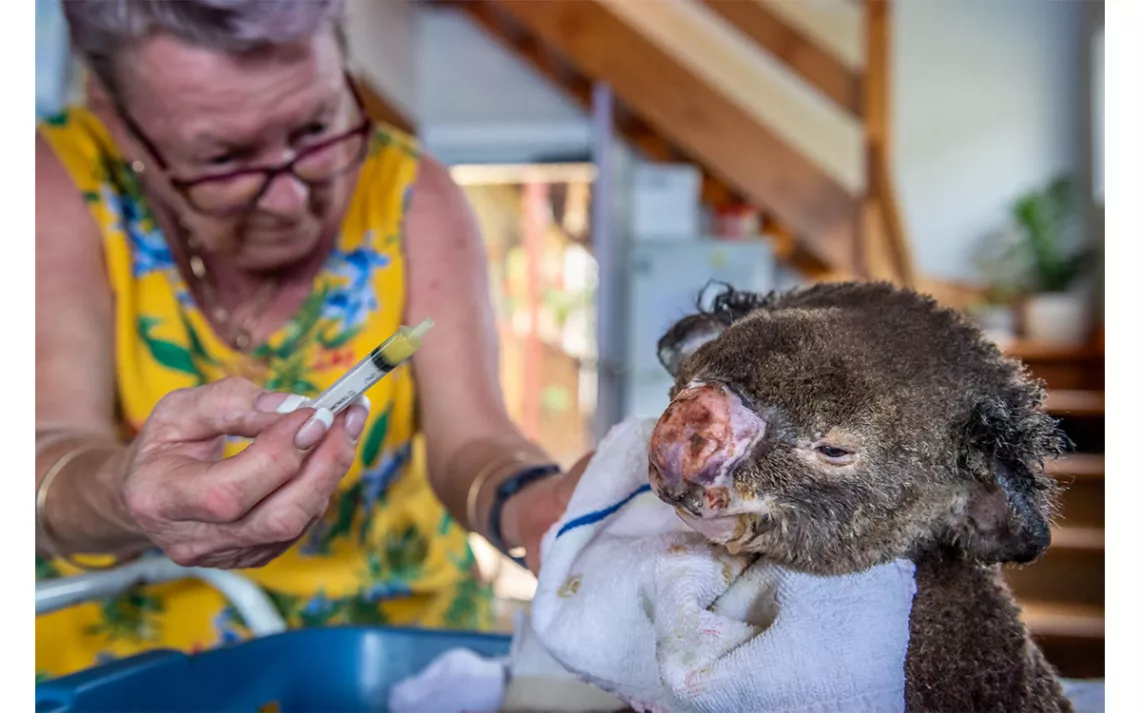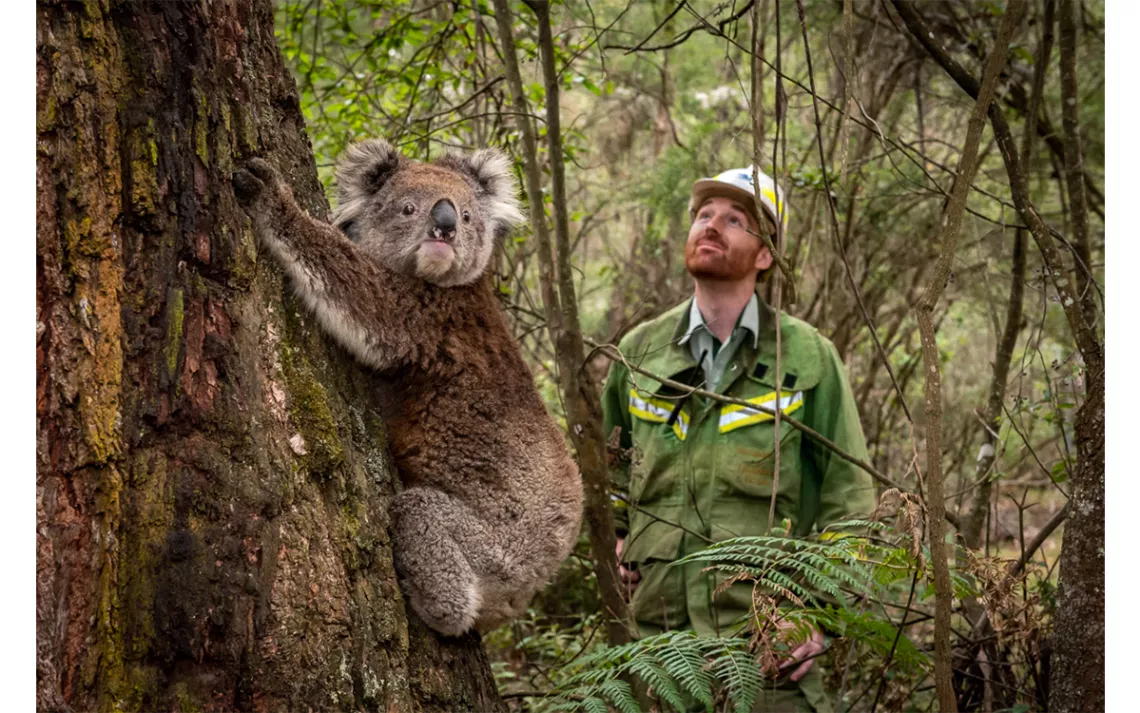Doug Gimesy Points His Camera Where Others Don’t Want to Look
The Australian photographer feels a moral obligation to document animal suffering
Photos by Doug Gimesy
Warning: This slideshow contains some graphic images of animal suffering.
Doug Gimesy’s photographs generally aren’t framed and given as gifts, unlike the work of other conservation and wildlife photographers. That’s because no one wants to hang an image on their wall of a kangaroo who was hit by a car. Or a koala with third-degree burns on its paws.
Gimesy is propelled by a fierce sense of moral obligation to document animal welfare issues. His mantra is “If not me, who? If not now, when?”
The Australian photographer’s professional path has been long and winding. After completing dual undergraduate degrees in zoology and microbiology, he picked up a camera and dreamed of having his photographs published in National Geographic. But it didn’t stick. “Either I wasn’t good enough or I couldn’t afford much film,” he says. “So I let that go.”
Gimesy worked as a graduate research assistant at Melbourne University, and then—inspired by Robin Williams in Dead Poets Society—earned his teaching certificate. But schools weren’t hiring. So he merged his interests in science and communication and got a job in pharmaceutical sales.
Then in 2000, Gimesy had one of his many midlife crises. He went back to school for two master's degrees: one in bioethics and one in environmental policy, governance, and communication. Shortly after, he started a communications consultancy for scientists and nonprofits.

While on vacation in Antarctica in 2012, he shot a photo of two penguins standing together on South Georgia Island and submitted it to National Geographic’s Your Shot series. It was selected. The caption, “Two degrees of separation,” alludes to the two degrees of global warming that would drastically alter the Antarctic ecosystem. “It wasn’t a great photo, but I was good at captioning things,” Gimesy says.
He entered and did well in more photography contests. He realized maybe he wasn’t that bad after all. By 2016, he made the transition to professional photography.
Gimesy is outgoing and well-read. His work primarily documents animals and the people dedicated to helping them—known as “wildlife carers” in Australia. “A lot of my work has humans in it, because I think humans can cause a lot of problems. But there’s a lot of fantastic humans out there who can fix problems as well,” he says.
His training in zoology, bioethics, and environmental communication informs his photographic process. “I think of Doug as almost invisible,” says Lawrence Pope, the president of the conservation group Friends of Bats and Bushcare, who has worked with Gimesy in the field. “He . . . seem[s] to strive [for] a present-absence, allowing the animals and situations he photographs to be maximally themselves.”
Anthony Molyneux, the wildlife manager at Currumbin Wildlife Sanctuary near Brisbane, Australia, shares a similar sentiment. He and Gimesy collaborated for a year on a plan to photograph the greater glider (a fluffy marsupial) using external lighting, which can sometimes stress animals out. They hung a black sheet in the enclosure of one of the sanctuary’s rescues a week in advance to allow it to adjust. Then Gimesy used two soft boxes and a rear light to create gently lit photographs.
Gimesy picks his captions carefully because, he says, they are integral to enhancing the image’s impact. He calls roadkill “road trauma,” and he doesn’t refer to dead animals as "lost." "We didn’t lose them. Give me the GPS coordinates. It’s not like you lose [a pair of] car keys and you go, ‘Oops, it’s an accident,’ and that takes away moral responsibility,” he says. He prefers to say it straight.
There is a long-standing debate over whether photojournalists are morally obligated to intervene if their subjects are in life-or-death situations, but Gimesy is clear where he stands. “If an animal is suffering, if it’s human-caused, I’ll intervene,” he says. His image of the kangaroo hit by a car is a case in point. He found the kangaroo lying on the side of the road, waiting to die. Until then, Gimesy had never considered that some “road trauma” doesn’t die straight away. He called a wildlife carer to come euthanize the kangaroo.
He hopes his images will inspire people to stop, think, and treat the world a little more kindly. (“I don’t want people to think nice things. I want people to do nice things,” he says.) This requires bearing witness to atrocities that most people would rather not see. Gimesy believes it is his moral duty to document the ways that climate change, habitat destruction, and disasters like the Australian bushfires are impacting wildlife. Between December 2019 and February 2020, he spent weeks roaming the charred landscape of New South Wales and Victoria documenting animals ravaged by the bushfires and the wildlife carers rehabilitating the survivors.
Inevitably, his work takes an emotional toll. After photographing the bushfires, Gimesy suffered vicarious trauma. “When you come back home and you put your memory card into your computer, and you open up these images, and you’re sitting in the quiet and you’re [looking at] these horrific images. . . . I started crying,” he says. He couldn’t explain his feelings to his partner. “You’ve got to see animals burning to death, to smell it, to know what it’s like,” he says.
So Gimesy has developed strategies for coping. He sees a counselor, and he keeps in touch with colleagues who have had similar experiences. He also works on more uplifting projects. He recently finished a children’s book about the grey-headed flying fox, a peculiar type of bat with a wingspan nearly one meter long. Gimesy has a long list of reasons to love these animals: They can breastfeed and carry their young while flying 30 kilometers an hour. They can perform high-speed belly dips into water, then hang upside down to let the droplets cool them off. And they’re pollinators. Pope says Gimesy is making “serious inroads” representing the flying fox—an oft-misunderstood species—to the public in a way that fosters sympathy.
Surrounded by so much suffering, Gimesy is inspired by the resilience that these underappreciated creatures display. “Once [a sick flying fox] knows you’re helping it out, it will let you help it out,” he says.
 The Magazine of The Sierra Club
The Magazine of The Sierra Club














